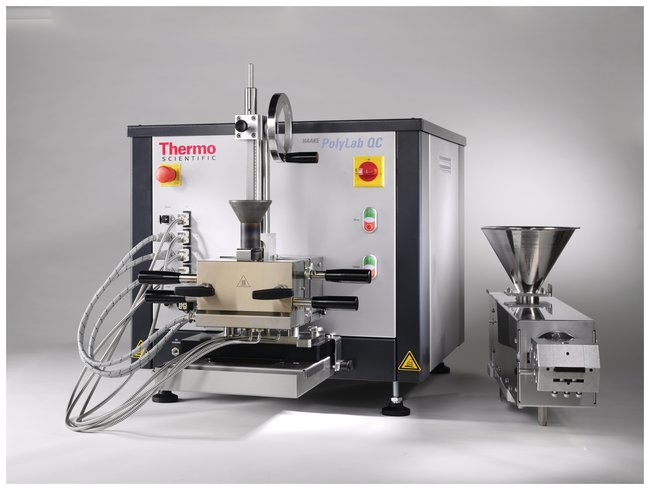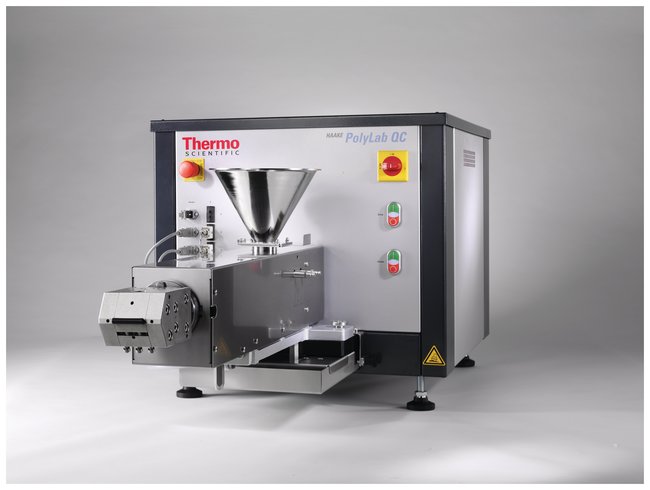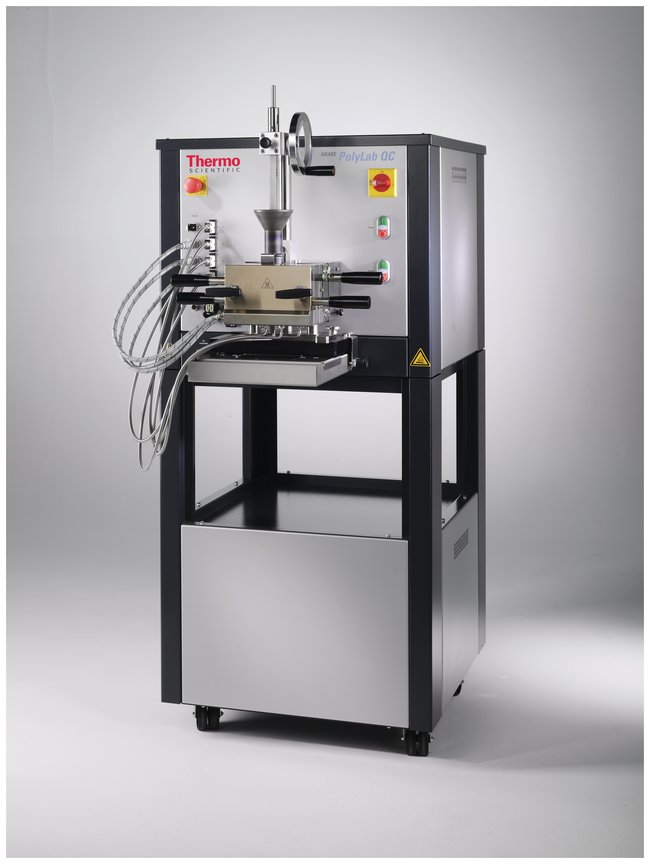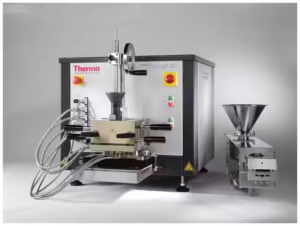Single-screw extrusion
Proven single-screw laboratory extruders deliver reliable data captured during the extrusion process to verify process parameters (speed, energy, temperature) for unknown materials or to manufacture smaller quantities of a new polymer (as strands, sheets, pellets, blown films) during research and development. The extruders are equipped with measuring ports for melt pressure and melt temperature to study the process parameters along the extruder barrels. These barrels are available in different lengths (length/diameter ratio). A die can be connected to the end of the extruder barrel to form the polymer melt as strand or film. Special rheological dies (slit, rod, x-die) allow the determination of shear- and elongational viscosity at defined shear rates. A variety of screw geometries to customize the extrusion process with different compression ratios, venting and mixing sections is offered. Wear-reduced screws and barrels increase the lifetime of the system. Standard feeders for pellets and special feeding systems for powders, pastes, liquids or highly viscous rubber complete the set up.
Typical single-screw investigations
Extrudability of newly developed materials
Manufacturing homogeneous melts
Manufacturing films, foils, strands and profiles for optical and mechanical testing as well as outdoor exposure tests
Measuring rheological behavior (viscosity, elasticity)
Testing individual and combined influences of additives (stabilizer, lubricant) and functional additives (anti-oxidation, UV-stabilizers, pigments and fillers)
Foam extrusion
The HAAKE Rheomex measuring extruder contains the necessary measuring, control and monitoring technology for the respective application. A new concept simplifies handling in the laboratory and enables secure operation. This is characterized by:
Mobile measuring sensors avoid the necessity of handling of heavy and hot parts
Integrated heating and cooling circuits reduce the number of plug connections and thus the danger of making incorrect connections
Several peripheral units such as feeding and post-extrusion units are computer controllable thus meaning better reproducibility and documentation








Reviews
There are no reviews yet.